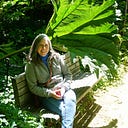Member-only story
Eating Foraged Mushrooms: A First For My Family
Photographing wild mushrooms can’t kill you but we ate one!
Over the last month, I’ve been taking photographs of all the varieties of fungi I’ve found in our Northern Wisconsin woods. There have been at least a dozen varieties!
I’ve learned that fungi appear and disappear in a matter of days. Their growth is exponential. Maybe this August is unusual. I don’t know, as I have not dedicated myself to foraging before. I know it’s been fun, wandering through our woods and keeping our eyes peeled for a spot of color, or odd shape attached to trees, stumps, or the ground.
One of my best finds was a variety of tooth fungi called Bear’ Head or Hericium americanum. I found it on the side of a tree stump on August 16th. Our oldest son was with me and he researched it after returning to the cabin. While he went on vacation, I found another bear’s head had started next to the original and was anxious to show him when he got back.
Tooth fungi, namely Lions Mane and Bear’s Head, are mushrooms that have a distinct shape in that they produce white, tooth-like projections instead of pores or gills. They are both edible and can be cultivated. The bear’s head is known for its medicinal properties in China. There, as well as here, it is sold in upscale grocery stores and served in high-priced restaurants.
There was no mistaking this mushroom for anything other than what it is, especially after we read about it. The fungal mass can range from 3–12 inches in size. The spines or tooth-like projections hang down, protruding from the branching of the base mass attached to the tree or stump. There are no poisonous look-alikes in North America according to The Complete Mushroom Hunter guide by Gary Lincoff (2010).
I’ve always been leary of eating foraged mushrooms. The rule is that unless you are 100% sure of the type of mushroom you have, you shouldn’t eat it. But, as we watched the second Bear’s Head mushroom grow, we began thinking about eating it. We knew from our research it was considered edible. There were no poisonous lookalikes to fool us AND it was supposed to taste…
